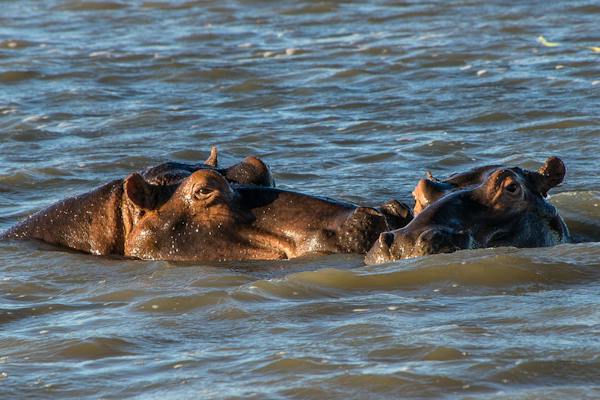Hippopotamuses are magnificent creatures. These giants love water and spend up to 16 hours a day submerged in lakes or rivers. No surprise, the Greeks named them the water horses. Despite their enormous bodies, they move swiftly and gracefully both in water and land. While anyone can also think they eat meat given their enormous size, hippos are herbivores, as they generally eat grass or fruits (if found).
But did you know that there are two extant hippopotamus species? You might have seen the larger and common hippopotamus (Hippopotamus Amphibius) bobbing on water pools but they have a smaller relative – the pygmy hippos, The latter are relatively harder to spot as they are nocturnal and shy creatures. In this article, let’s know more about two species and what makes them both interesting animals.
Common Hippopotamus
- Kingdom: Animalia
- Phylum: Chordata
- Class: Mammalia
- Order: Artiodactyla
- Family: Hippopotamidae
- Genus: Hippopotamus
- Species: H. amphibius
Common hippos are the larger species and the third-largest land mammal next to the elephant and the rhinoceros. They prefer shallow and slow-moving waters, such as rivers, lakes, and mangrove swamps, where they can submerge all day. Only their nostrils and eyes poke out of the water, just enough to allow them to breathe and see their surroundings.
They are quickly recognizable with their large bodies and hairless skin, which color ranges from purplish-gray to slate or brownish red, highlighted by pink spots on their face. Though this animal greatly resembles pigs, their closest relatives are cetaceans, such as dolphins, whales, and porpoises.
An adult common hippo can weigh from 1.5 to 3 tons, stand 1.5 meters tall, and measure 3.5 meters long. They have relatively short legs but don’t underestimate them. These giant amphibians are good runners and can reach 30 km/h on land over short distances.
Though these hippos appear slow, sluggish, and peaceful, they can be highly aggressive when threatened. They have wide mouths, powerful jaws, and sharp incisors, which they use to scare rival hippos and predators. Yet, they will relentlessly attack if needed.
Common hippos stay in herds consisting of 10 to 20 animals, led by a dominant male. Other members of the group include the females, their offspring, and younger non-breeding males. Herds may aggregate in certain areas, bringing the total number to nearly 200 individuals. Still, dominant males are very protective of their group and their territory.
Common hippo cools off during the day and becomes active at night to search for food. They eat mainly grass and can munch up to 35 kilograms of grass in one night. Yet, due to climate change and loss of foraging lands from continuous human activities and development, their population is decreasing, with only an estimated 125,000 and 150,000 individuals scattered in 29 sub-Saharan countries. They can live up to 40 years in the wild but thrive better in captivity, reaching over 50 years old under human care.
Pygmy Hippopotamus
- Kingdom: Animalia
- Phylum: Chordata
- Class: Mammalia
- Order: Artiodactyla
- Family: Hippopotamidae
- Genus: Hexaprotodon
- Species: H. liberiensis
Pygmy hippos possess a lot of physical characteristics as that of the common hippos. They also have a bulky body, grayish to brownish-red hairless skin. The main difference is that they are relatively smaller, weighing only from 397 to 606 pounds, standing 0.7 to 1 meter, and measuring 1.5 to 1.7 meters long. Their skull also has less pronounced orbits, while eyes and nostrils also don’t protrude unlike that of their bigger relatives.
While common hippos are widespread in different sub-Saharan countries, pygmy hippos are native to West Africa’s rainforests and swap areas, mainly in Liberia, with smaller populations in Guinea, Ivory Coast, and Sierra Leone. They also have nocturnal tendencies, foraging grass at night, but prefer to be more solitary and are only found in pairs or mothers with their offspring.
Pygmy hippos are currently listed as endangered under the IUCN Red List of Threatened Species, with deforestation deemed as the main culprit in their population decline. They are illegally hunted for their meat, and are affected by natural predators and war. There are only an estimated 2000-3000 individuals living in West Africa.
Pygmy hippos can live from 30 to 55 years, but thrives better in captivity. President Calvin Coolidge had a pet pygmy hippopotamus named Billy, who has sired 23 calves, and become the ancestor of the pygmy hippos in many American zoos.

